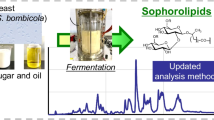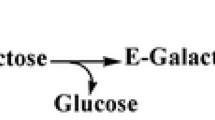Abstract
Despite nomenclature conventions of the International Union of Pure and Applied Chemistry and the International Union of Biochemistry and Molecular Biology, the repeating unit of cellulose is often said to be cellobiose instead of glucose. This review covers arguments regarding the repeating unit in cellulose molecules and crystals based on biosynthesis, shape, crystallographic symmetry, and linkage position. It is concluded that there is no good reason to disagree with the official nomenclature. Statements that cellobiose is the repeating unit add confusion and limit thinking on the range of possible shapes of cellulose. Other frequent flaws in drawings with cellobiose as the repeating unit include incorporation of O-1 as the linkage oxygen atom instead of O-4 (the O-1 hydroxyl is the leaving group in glycoside synthesis). Also, n often erroneously represents the number of cellobiose units when n should denote the degree of polymerization i.e., the number of glucose residues in the polysaccharide.



Similar content being viewed by others
References
Barber GA, Hassid WZ (1965) Synthesis of cellulose by enzyme preparations from the developing cotton boll. Nature 207:295–296
Barber GA, Elbein AD, Hassid WZ (1964) The synthesis of cellulose by enzyme systems from higher plants. J Biol Chem 239:4056–4061
Cocinero EJ, Gamblin DP, Davis BG, Simons JP (2009) The building blocks of cellulose: the intrinsic conformational structures of cellobiose, its epimer, lactose, and their singly hydrated complexes. J Am Chem Soc 131:11117–11123
Ernst A, Vasella A (1996) Oligosaccharide analogues of polysaccharides: part 8. Orthogonally protected cellobiose-derived dialkynes. A convenient method for the regioselective bromo- and protodegermylation of trimethylgermyl- and trimethylsilyl-protected dialkynes. Helv Chim Acta 79:1279–1294
French AD (2011) Csonka GI (2011) Hydroxyl orientations in cellobiose and other polyhydroxyl compounds: modeling versus experiment. Cellulose 18:897–909
French AD, Johnson GP (2004) What crystals of small analogs are trying to tell us about cellulose structure. Cellulose 11:5–22
French AD, Johnson GP (2006) Quantum mechanics studies of cellobiose conformations. Can J Chem 84:603–612
French AD, Johnson GP (2007) Linkage and pyranosyl ring twisting in cyclodextrins. Carbohydr Res 342:1223–1237
French AD, Johnson GP, Cramer CJ, Csonka GI (2012) Conformational analysis of cellobiose by electronic structure theories. Carbohydr Res 350:68–76
Glaser L (1957) The enzymic synthesis of cellulose by Acetobacter xylinum. Biochim Biophys Acta 25:436 (single page note)
Glasser WG, Atalla RH, Blackwell J, Brown RM Jr, Burchard W, French AD, Klemm DO, Nishiyama Y (2012) About the structure of cellulose: debating the Lindman hypothesis. Cellulose 19:589–598
JCBN (1982) Polysaccharide nomenclature recommendations 1980* Pure Appl Chem 54:1523–1526; J Biol Chem 257:3352–3354; https://www.iupac.org/publications/pac/1982/pdf/5408x1523.pdf
JCBN (1983) Symbols for specifying the conformation of polysaccharide chains. Recommendations 1981, Eur J Biochem 131:5–7; Pure Appl Chem 55:1269–1272. http://www.chem.qmul.ac.uk/iupac/misc/psac.html
Kalenius E, Kekäläinen T, Neitola R, Beyeh K, Rissanen K, Vainiotalo P (2008) Size- and structure-selective noncovalent recognition of saccharides by tetraethyl and tetraphenyl resorcinarenes in the gas phase. Chem Eur J 14:5220–5228
Kouwijzer MLCE, van Euck BP, Kooijman H, Kroon J (1995) An extension of the GROMOS force field for carbohydrates, resulting in improvement of the crystal structure determination of α-d-galactose. Acta Crystalloogr Sect B 51:209–220
Langan P, Nishiyama Y, Chanzy H (2001) X-ray structure of mercerized cellulose II at 1 Å resolution. Biomacromol 2:410–416
Macrae CF, Bruno IJ, Chisholm JA, Edgington PR, McCabe P, Pidcock E, Rodriguez-Monge L, Taylor R, van de Streek J, Wood PA (2008) Mercury CSD 2.0 – new features for the visualization and investigation of crystal structures. J Appl Cryst 41:466–470
Meader D, Atkins EDT, Happey F (1978) Cellulose trinitrate: molecular conformation and packing considerations. Polymer 19:1371–1374
Medronho B, Romano A, Miguel MG, Stigsson L, Lindman B (2012) Rationalizing cellulose (in)solubility: reviewing basic physicochemical aspects and role of hydrophobic interactions. Cellulose 19:581–587
Nishiyama Y, Langan P, Chanzy H (2002) Crystal structure and hydrogen-bonding system in cellulose Iβ from synchrotron X-ray and neutron fiber diffraction. J Am Chem Soc 124:9074–9082
Nishiyama Y, Sugiyama J, Chanzy H, Langan P (2003) Crystal structure and hydrogen bonding system in cellulose Iα from synchrotron X-ray and neutron fiber diffraction. J Am Chem Soc 125:14300–14306
Oscarson S (1999) Conjugation of monosaccharides – synthesis of glycosidic linkages in glycosides, oligosaccharides, and polysaccharides. In: Finch P (ed) Carbohydrates Structures, syntheses and dynamics. Kluwer Academic Publishers, Dordrecht
Strati GL, Willett JL, Momany FA (2002) Ab initio computational study of β-cellobiose conformers using B3LYP/6-311 ++G**. Carbohydr Res 337:1833–1849
Wada M, Chanzy H, Nishiyama Y, Langan P (2004) Cellulose IIII Crystal Structure and Hydrogen Bonding by Synchrotron X-ray and Neutron Fiber Diffraction. Macromolecules 37:8548–8555
Wada M, Heux L, Nishiyama Y, Langan P (2009) X-ray crystallographic, scanning microprobe X-ray diffraction, and cross-polarized/magic angle spinning 13C NMR studies of the structure of cellulose IIIII. Biomacromol 10:302–309
Whitaker PM, Nieduszynski IA, Atkins EDT (1974) Structural aspects of soda-cellulose II. Polymer 15:125–127
Acknowledgments
John Vercellotti, Carlos Stortz, and Hee-Jin Kim all commented helpfully on a preliminary version of the manuscript. Contributions of the anonymous reviewers for the journal are gratefully acknowledged.
Author information
Authors and Affiliations
Corresponding author
Rights and permissions
About this article
Cite this article
French, A.D. Glucose, not cellobiose, is the repeating unit of cellulose and why that is important. Cellulose 24, 4605–4609 (2017). https://doi.org/10.1007/s10570-017-1450-3
Received:
Accepted:
Published:
Issue Date:
DOI: https://doi.org/10.1007/s10570-017-1450-3




